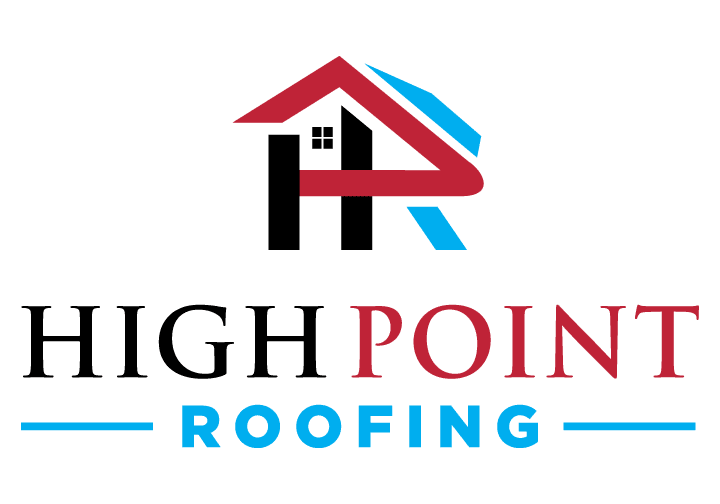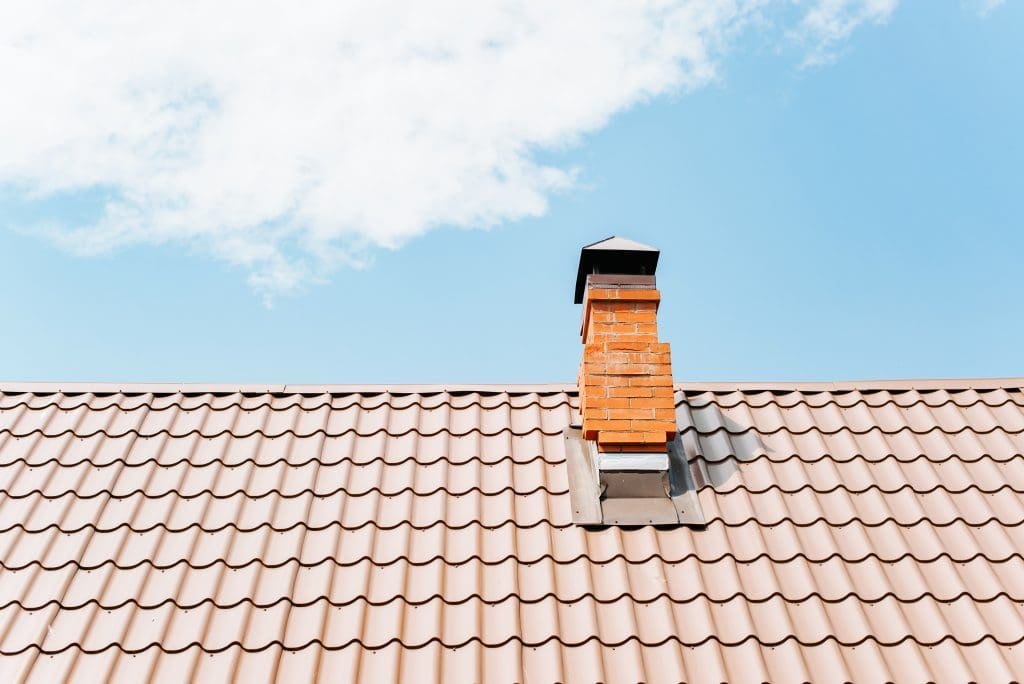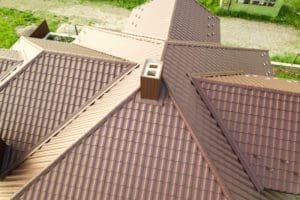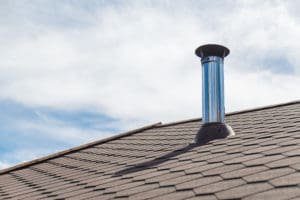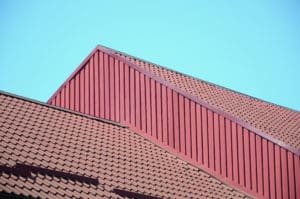The summer heat can have a detrimental impact on your roof, causing damage and reducing its lifespan. Understanding how heat affects roofing materials is crucial for homeowners to ensure the longevity and durability of their roofs. Additionally, protecting your roof from damaging UV rays and heat-related issues is essential to maintain a functional and secure roofing system. In this article, we will discuss the different ways in which the summer heat can negatively affect your roof and provide preventive measures to protect it.
Understanding the Impact of Heat on Roofing Materials
Heat is a major factor in the expansion and contraction of roofing materials, which can lead to cracks, leaks, and structural damage. The science behind heat and material expansion is important to grasp in order to understand the potential effects on your roof.
The Science Behind Heat and Material Expansion
When roofing materials absorb heat from the sun, they expand. As they cool down during the evening or at night, they contract. This constant expansion and contraction can weaken the materials over time, making them more prone to damage. The repeated stress caused by temperature fluctuations can lead to cracks, splits, and buckling in the roof.
Moreover, the impact of heat on roofing materials is not just limited to expansion and contraction. High temperatures can also accelerate the aging process of the materials, causing them to deteriorate faster than expected. This can result in a shorter lifespan for the roof and the need for more frequent repairs or replacements.
Types of Roofing Materials Most Affected by Heat
Not all roofing materials are equally affected by heat. Certain types are more susceptible to damage caused by high temperatures. Asphalt shingles, for example, are commonly used but can absorb heat and deteriorate quickly. Metal roofs, on the other hand, have high thermal conductivity and can become extremely hot, potentially causing damage to the underlying structure. Understanding the vulnerability of different roofing materials is crucial when considering heat-related issues.
Additionally, clay tiles are another type of roofing material that can be significantly impacted by heat. While they are known for their durability and fire resistance, prolonged exposure to high temperatures can cause them to become brittle and prone to cracking. It is essential for homeowners in hot climates to carefully consider the choice of roofing material to ensure longevity and structural integrity.
The Role of UV Rays in Roof Damage

UV rays from the sun are another significant factor in roof damage. These rays can cause discoloration, degradation, and surface decay, particularly in certain roofing materials. Understanding how UV rays deteriorate roofing materials can help homeowners take appropriate measures to protect and maintain their roofs.
Roofs are constantly exposed to the elements, with UV rays being one of the most relentless forces they face. The impact of UV rays on roofing materials is not just cosmetic; it can lead to structural issues that compromise the integrity of the roof over time. This is why addressing UV damage is crucial in ensuring the longevity of your roof.
How UV Rays Deteriorate Roofing Materials
When UV rays directly hit the surface of roofing materials, they break down the chemical bonds within the materials. This degradation can lead to the loss of protective properties, such as reflectivity and water resistance. Over time, the continuous exposure to UV rays can cause the roofing materials to become brittle and prone to cracking.
Moreover, UV rays can accelerate the aging process of roofing materials, making them more susceptible to damage from other environmental factors like wind, rain, and snow. This interconnected impact underscores the importance of addressing UV damage promptly to maintain the overall health of your roof.
Protecting Your Roof from UV Damage
To protect your roof from UV damage, consider adding a UV-protective coating. This coating acts as a barrier between the roofing material and the sun’s harmful rays, helping to prevent deterioration and extending the lifespan of your roof. Additionally, regularly inspecting your roof for any signs of UV-induced damage, such as discoloration or brittleness, can help you catch and address issues before they worsen.
Furthermore, implementing shading elements near your roof, such as trees or pergolas, can help reduce the direct exposure to UV rays. By creating a buffer between the sun and your roof, you can mitigate the damaging effects of UV radiation and prolong the life of your roofing materials. Taking proactive steps to shield your roof from UV damage is a wise investment in the long-term health and durability of your home.
The Consequences of High Temperatures on Roof Lifespan

High temperatures can significantly impact the lifespan of your roof. Understanding how heat accelerates roof aging and recognizing the signs of heat-induced roof damage are essential in preserving the integrity of your roofing system.
Roofs are constantly exposed to the harsh elements, with high temperatures being one of the most detrimental factors. The scorching heat from the sun can cause roofing materials to deteriorate at a faster rate than usual. This accelerated aging process can weaken the structural integrity of the roof, making it more susceptible to damage from other environmental factors such as wind, rain, and debris.
How Heat Accelerates Roof Aging
The constant exposure to high temperatures can cause roofing materials to age prematurely. The expansion and contraction caused by heat can lead to warping, cracks, and leaks. The cumulative effect of heat can accelerate the deterioration of your roof, reducing its overall lifespan and requiring costly repairs or replacement.
In addition to physical damage, high temperatures can also contribute to the growth of mold and mildew on the roof surface. The combination of heat and moisture creates the perfect breeding ground for these harmful organisms, which can further compromise the integrity of the roof and pose health risks to the occupants of the building.
Signs of Heat-Induced Roof Damage
There are several signs that indicate heat-induced roof damage. These can include visible cracks or splits in the roofing material, curled or buckled shingles, and leaks. Paying attention to these signs and regularly inspecting your roof can help you identify and address heat-related issues early on, minimizing potential damage and expenses.
Furthermore, prolonged exposure to high temperatures can cause the roof to lose its energy efficiency, leading to increased cooling costs for the building. The heat absorbed by the roof can transfer into the interior spaces, forcing the air conditioning system to work harder to maintain a comfortable temperature. This added strain on the HVAC system not only results in higher energy bills but also reduces its lifespan, adding to the overall maintenance costs of the building.
The Effect of Summer Heat on Roof Insulation

Roof insulation plays a crucial role in maintaining energy efficiency and preventing heat transfer between your home and the outside environment. Understanding the importance of proper roof insulation and addressing heat-related issues can help homeowners optimize energy usage and comfort.
When the scorching summer sun beats down on your roof, the importance of quality insulation becomes even more apparent. Proper roof insulation not only helps in keeping your home cool during the hot months but also aids in maintaining a consistent temperature throughout the year. By creating a barrier against the outdoor heat, insulation ensures that your air conditioning system doesn’t have to work overtime to combat the rising temperatures, ultimately saving you money on energy bills.
The Importance of Proper Roof Insulation
Proper roof insulation helps regulate the temperature inside your home by reducing heat transfer. It prevents the hot air from entering your living space during summer, ensuring a comfortable indoor environment and reducing energy costs. Insufficient or degraded roof insulation can result in increased energy consumption and discomfort within your home.
Moreover, adequate roof insulation also plays a vital role in preserving the structural integrity of your home. By minimizing temperature fluctuations in the attic and roof space, insulation helps prevent moisture buildup and potential damage to the roof structure. This not only extends the lifespan of your roof but also reduces the risk of mold growth and other related issues.
Heat-Related Issues in Roof Insulation
Extreme heat can cause damage or degradation to roof insulation, reducing its effectiveness. Prolonged exposure to high temperatures can cause insulation materials to become compressed, lose density, or even develop gaps. This compromises the insulation’s ability to resist heat transfer and can result in increased energy usage and decreased comfort.
It’s essential for homeowners to regularly inspect their roof insulation, especially after periods of intense heat, to ensure that it is still performing optimally. Addressing any issues promptly can help maintain the efficiency of the insulation and prolong its lifespan, ultimately benefiting both your comfort and your wallet in the long run.
Preventive Measures to Protect Your Roof from Summer Heat

Protecting your roof from summer heat requires proactive measures. Regular maintenance and inspection, choosing heat-resistant roofing materials, and considering roof coatings are effective strategies to combat potential damage caused by the heat.
Regular Roof Maintenance and Inspection
Scheduling regular roof inspections and maintenance can help identify and address issues early, preventing further damage. This includes checking for cracked or warped shingles, damaged flashing, or any signs of water intrusion. Keeping your roof in good condition ensures its resilience against the damaging effects of heat.
Moreover, during these inspections, it is crucial to pay attention to the gutters and downspouts. Clogged gutters can lead to water pooling on the roof, which can exacerbate the impact of heat. By ensuring that the gutters are clear of debris and functioning properly, you can prevent water damage and maintain the integrity of your roof.
Choosing Heat-Resistant Roofing Materials
When considering roof replacement or installation, opt for heat-resistant roofing materials. These materials are designed to withstand high temperatures and reduce heat transfer into your home. Examples include metal roofs, clay or concrete tiles, and certain types of synthetic or composite shingles.
Additionally, it is important to consider the color of your roofing materials. Light-colored roofs reflect more sunlight, reducing the amount of heat absorbed by your home. This can significantly contribute to keeping your home cooler during the scorching summer months.
The Benefits of Roof Coatings for Heat Protection
Applying a roof coating can provide an additional layer of protection against the summer heat. Roof coatings are designed to reflect sunlight and reduce heat absorption, effectively lowering the internal temperature of your home. Furthermore, roof coatings can enhance the overall durability and waterproofing properties of your roof, extending its lifespan.
There are various types of roof coatings available, each with its unique benefits. Reflective coatings, for example, are specifically formulated to reflect a significant amount of sunlight, reducing the heat absorbed by the roof. On the other hand, elastomeric coatings provide flexibility and resistance to cracking, ensuring long-lasting protection against heat and other environmental factors.
By carefully selecting the appropriate roof coating for your specific needs, you can maximize the heat protection and longevity of your roof.
In conclusion, the summer heat can negatively affect your roof in various ways, including material expansion, UV damage, accelerated aging, and insulation degradation. However, by understanding these effects and implementing preventive measures, you can protect your roof and extend its lifespan. Regular maintenance, choosing heat-resistant materials, considering roof coatings, and addressing insulation issues are all essential steps in maintaining a functional and secure roofing system throughout the summer months.
